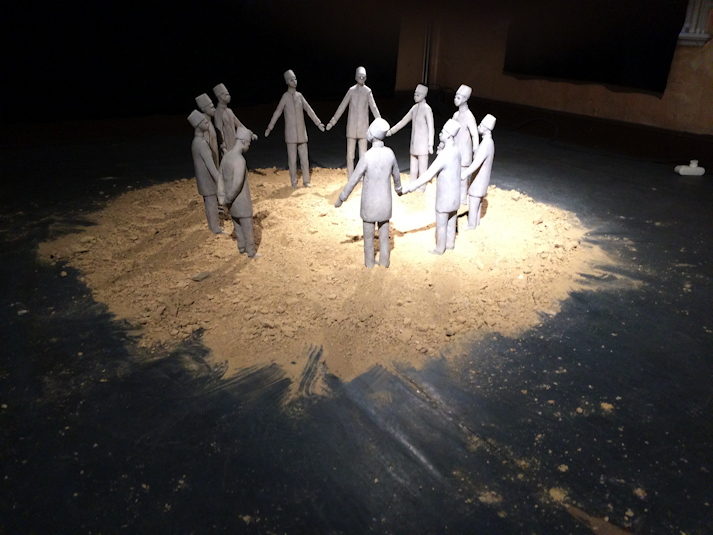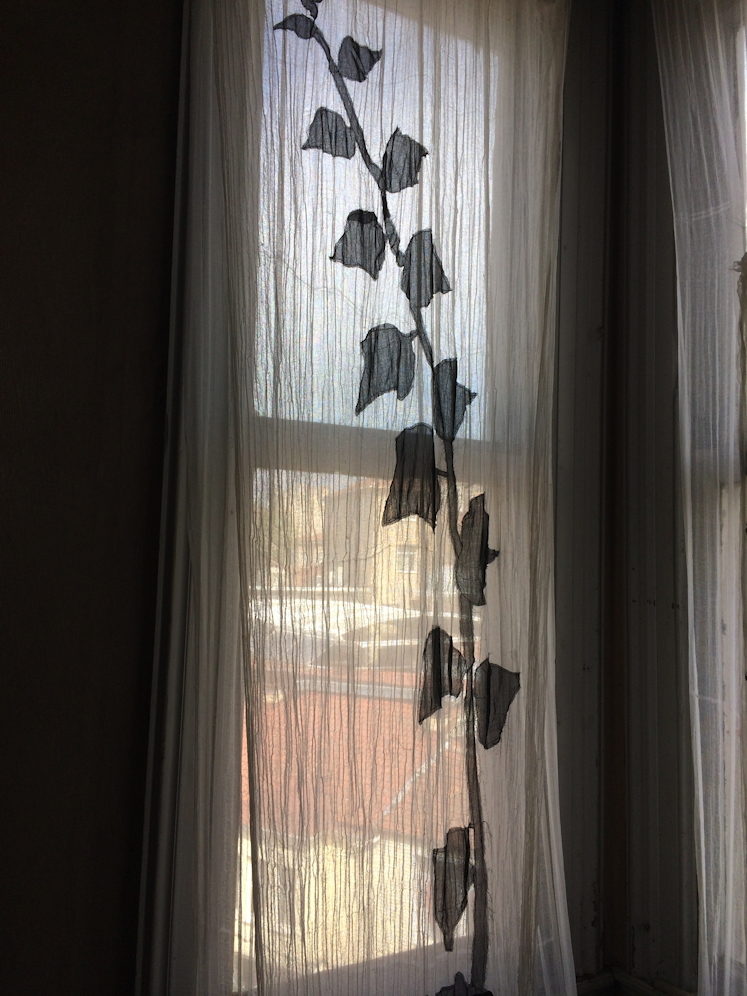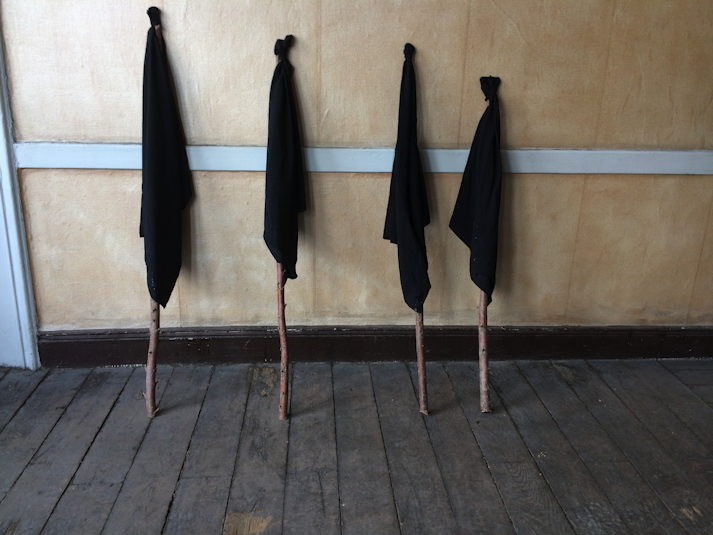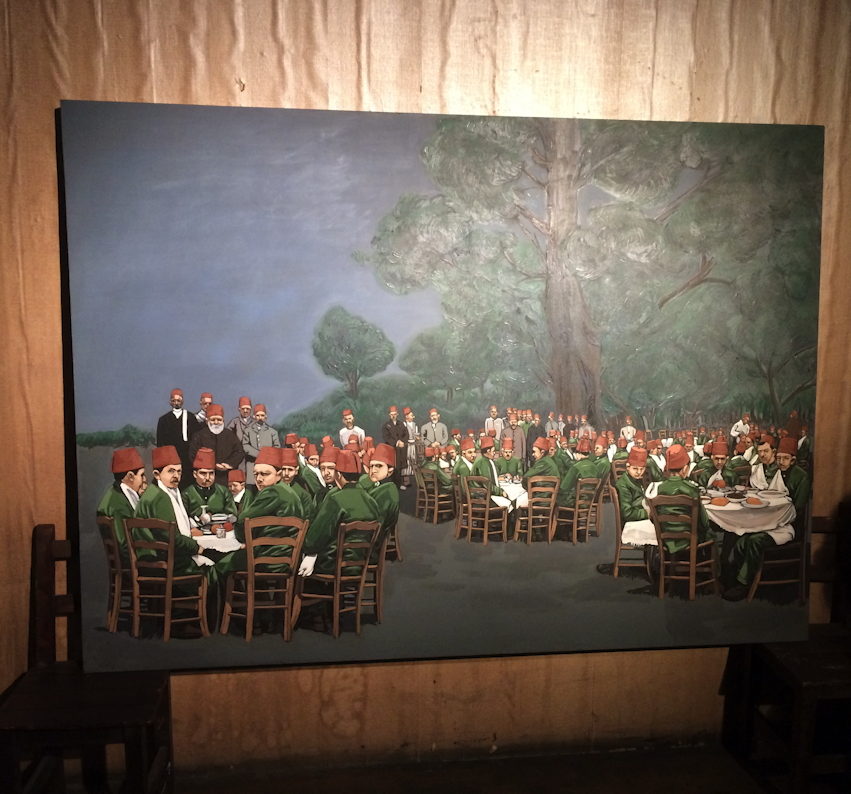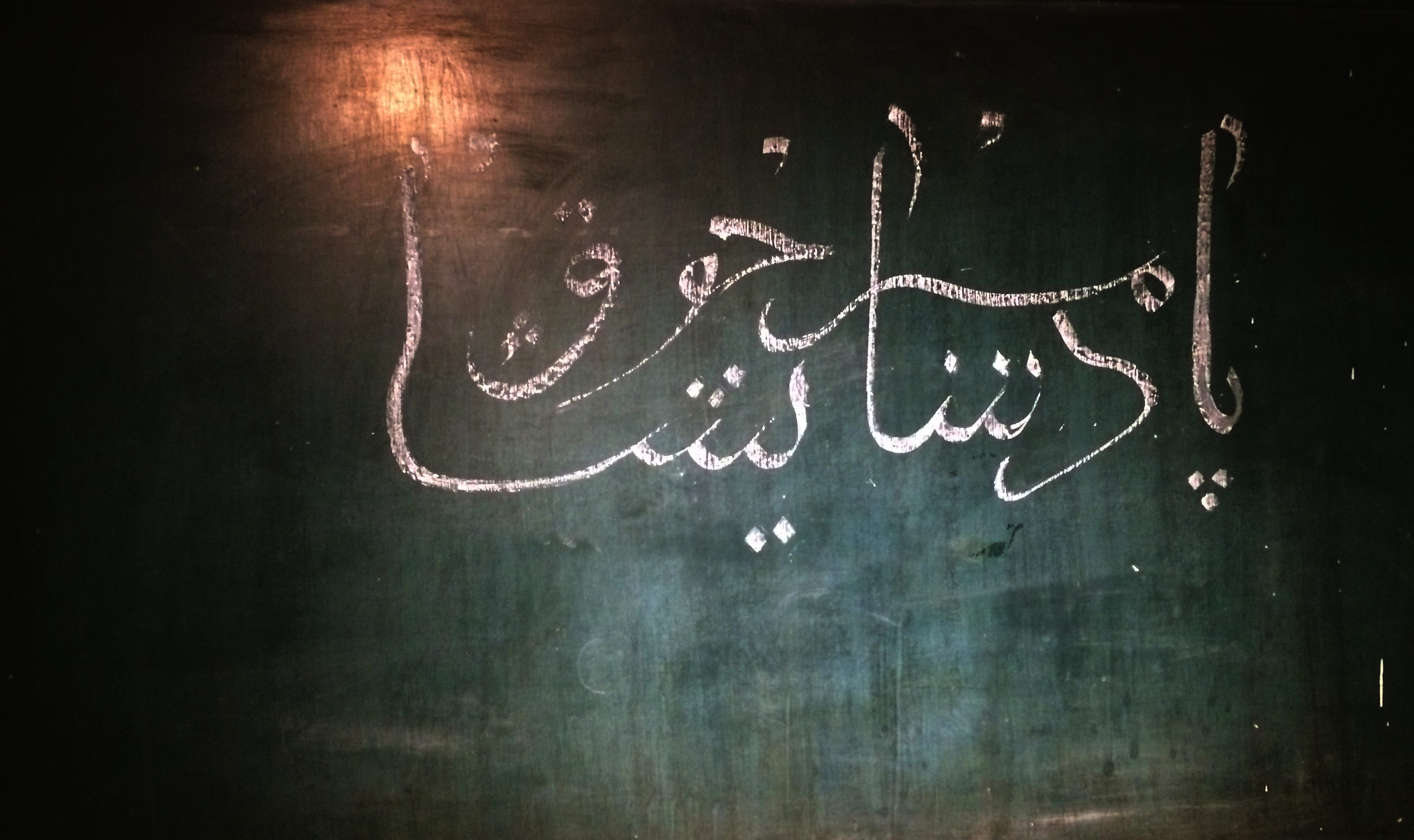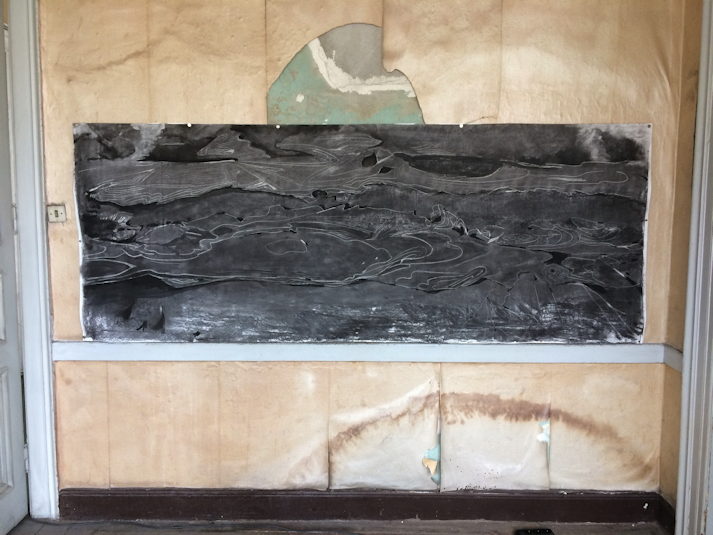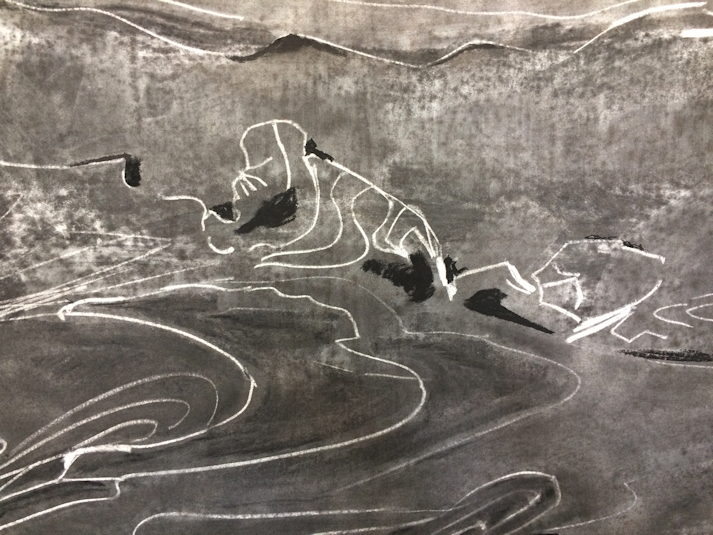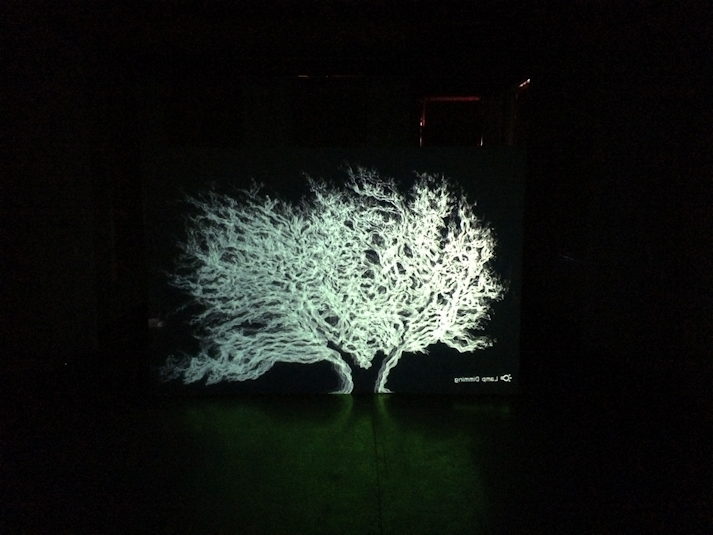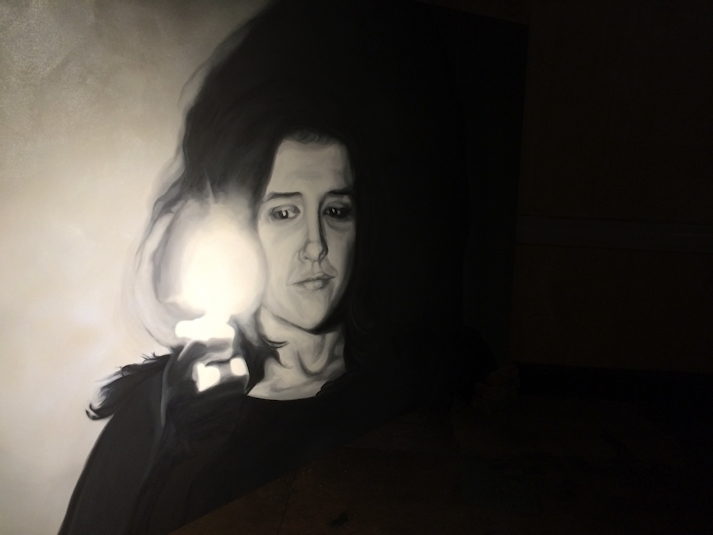Remote Memory – Uzak Hafıza
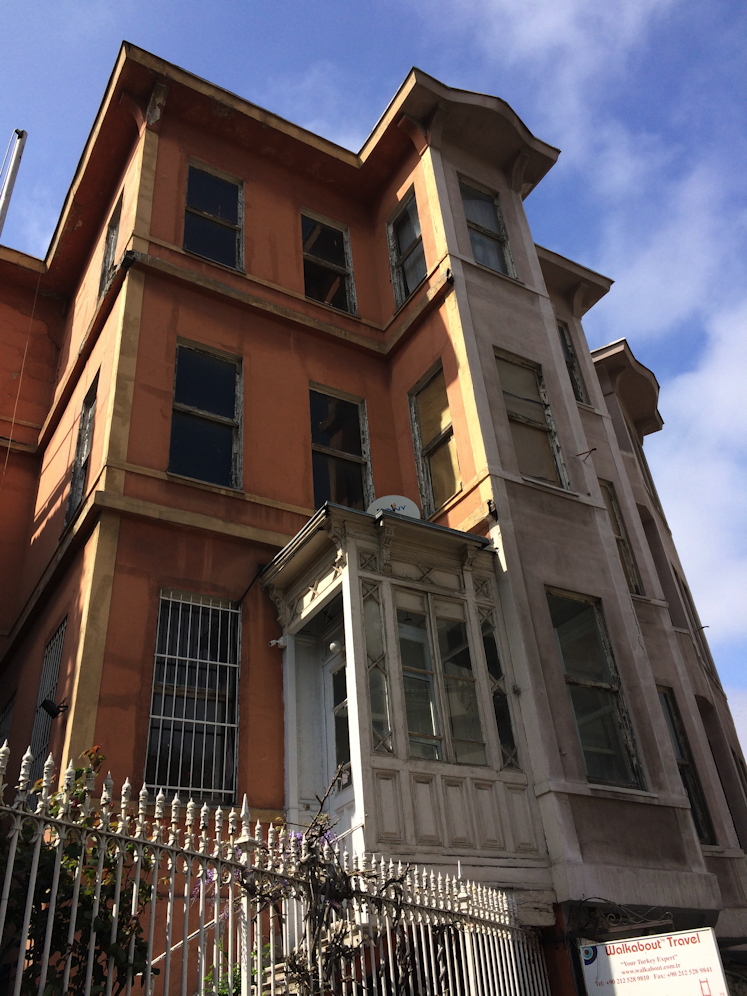
Remote memory refers to reflections of Beatriz Sarlo on collective and personal memory. The Argentinian art critic underlines the importance of an interpreting understanding of the past. Curator Yaren Akbal choose the Abdul efendi mansion close to the Hagia Sophia to invite 16 artists for side specific works. The relation between past and present are to be processed mainly by an exploration of space and body.
The location served as a generous elegant home for a Syrian wealthy family in the 19th century. Later on it was sold and was first used by the American YMCA and then by an American educational institution. Long years of abandonment left its marks. The wooden house preserves a shaded beauty. Çağrı Saray’s projection of a white tree on black plexiglass is called witness and seems to be a living spirit of the house, waving and moving in silence.
Sevil Tunaboylu installed a self-portrait in black and white. The oil painting is held in the aesthetics of a film noir, the artist is holding a bright light. Just the title unveils in dry humour the origin of it: in the future lighters will never run out of fuel.
Güneş Terkol installed a fabric with motives of females and an ivy illustrating the various parts of female existence. Women working in harvest and textile production, women having knowledge about healing. Women shaping the decorations of a home and women often having to hide behind curtains. The gaze like cloth has something unreal, the title of the work is holographic recording, a reference to the endless flow of time.
Ihsan Oturmak orchestrates “The last supper” in the set up of Ottoman Tribes from Kurdish origin 100 years ago. A school in Istanbul served as an assimilation instrument. The men sitting at the dinner-tables are having young bodies and old faces. The painting reflects a certain stage of agony. In the room across the artist placed white pale figures of Ottoman boys on sand standing in a circle holding hands like in a roundelay. The Title “I don’t want to play” transforms the poses of the figures to a formation of force and pain and a certain strength of the fragile as well. On the Wall of the room is a school board with the word “human” written in chalk on it.
Didem Erbaş installed four black flags leaning on a wall as the “unrepresentable flags”. A painting with a black surface and white features showing bodies in a secret fight. One is reminding a famous Photograph called “the silent witness” by Ramazan Öztürk taken after the poison attack by Iraqi troops on the Kurdish population of Halabja in 1988. It shows an old man holding his grandchild. Both bodies sunken to the front in a pose of a death that came unexpected and sudden with no chance for rescue.
This features have to be discovered under layers. The visitor needs some time and knowledge to catch a statement omnipresent in the show. The bodies and beings in this historical mansion are hunted by a past burdening the present with a heavy load. Just the beauty of the space, an unbending tree, a line of cloves and the anarchist wish of a committed smoker reminds: beneath black crust quite often blazes flaming fire.


